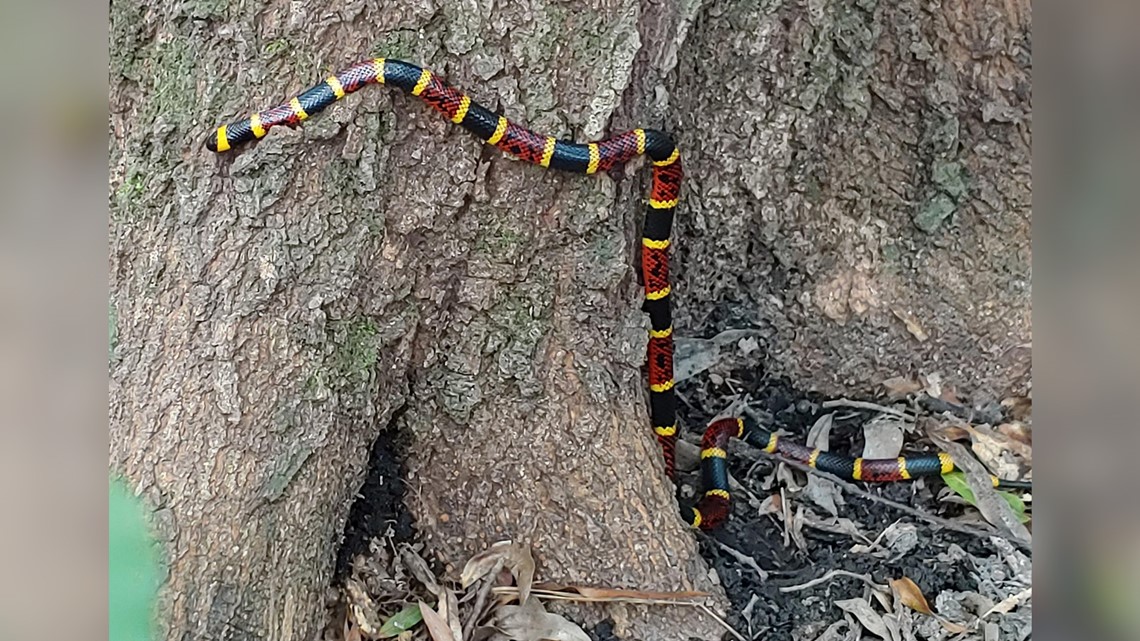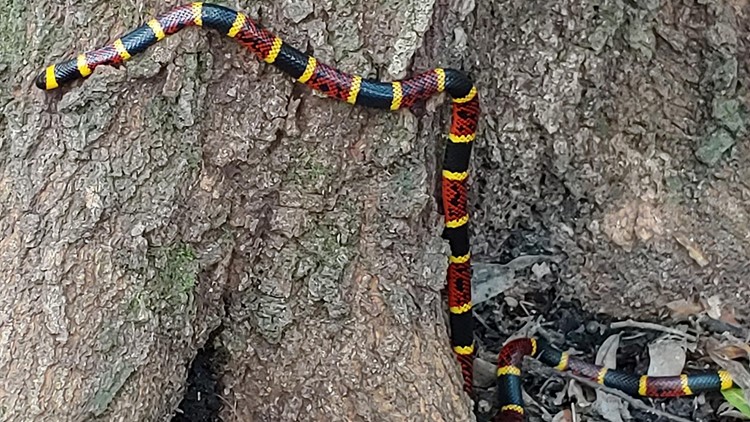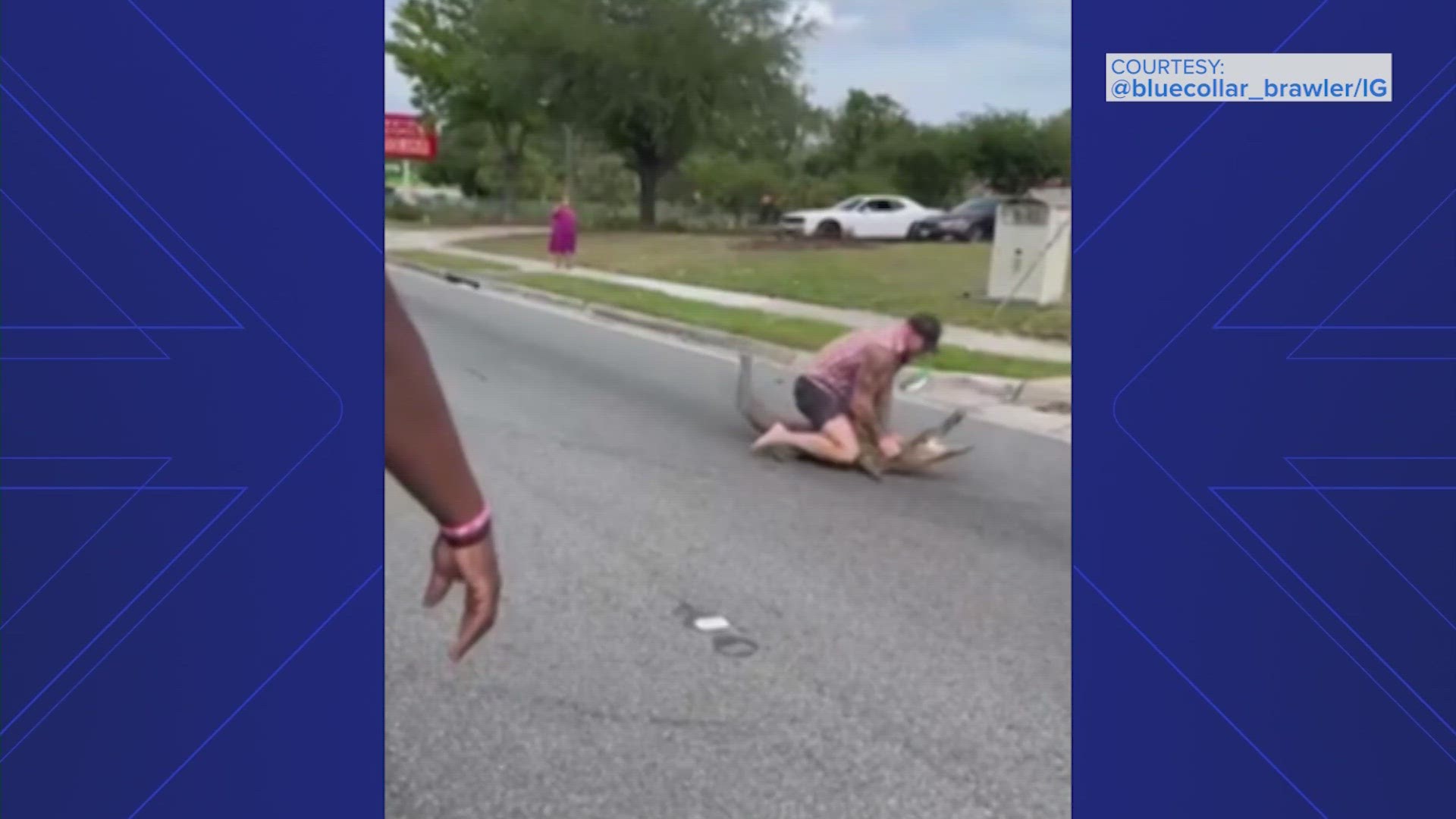HOUSTON — “Watch your step out there!”
That’s the warning from redditor Christian Seehausen, who said he spotted what appeared to be a coral snake in Memorial Park on Monday afternoon.
“This was just a foot or two off the trail, right next to a bench on the Inner Loop trail near the Nature Center. My understanding is that these guys are pretty docile and probably won't bite unless you touch them/scare them, but still, be careful out there, and never mess around with one," wrote Seehausen.
While Texas snake sightings are typically more common in the springtime as winter temperatures give way to warmer conditions, they can also frequently be found through fall.


Seehausen told KHOU 11 he believed the snake was about two feet long or a little under.
The coral snake is one of those dangerously venomous but typically shy snakes, to which the popular rhyming reminder "Red on yellow, kill a fellow" can apply.
According to Texas Parks and Wildlife, only one species of coral snake is native to Texas: “The coral snake is shy and rarely seen. It has, in order, red, yellow and black colors. The coral snake has a small mouth and is usually not aggressive. Its bites are dangerous, but very rare.”
It should not be confused with the harmless milk snake, which has a similar appearance, but the colors are instead “red on black.”
Snake experts suggest that while the coral snake is deadly, bites are rare and usually due to someone trying to pick up or handle the snake. The New Mexico Department of Game and Fish states their fangs are weak. According to National Geographic, no deaths from coral snake bites have been reported in North America since the 1960s.
The big lesson here: Yes, deadly wildlife lives in Houston's parks and bayous. Stay cautious and steer clear, but don’t disturb (and certainly don’t kill) these beautiful creatures.



